The Animals
Alpaca
General Info
Common Name: Alpaca
Scientific Name: Vicugna pacos
Physical Appearance: They are the smallest domesticated camelid. Alpacas are smaller in size than the llama and cannot carry heavy loads. They have 16 documented colors in the United States. Peru has 52 classified color variations. Their coats can be uniform or multicolored. There are two types of alpacas: Suri and Huacaya. Suris have long, silky dreadlocks whereas Huacayas have dense, crimped fleece.
Length/Weight: 4-7 feet, 100-200 lbs.
Lifespan: 15-20 years. Oldest recorded: 27 years old.
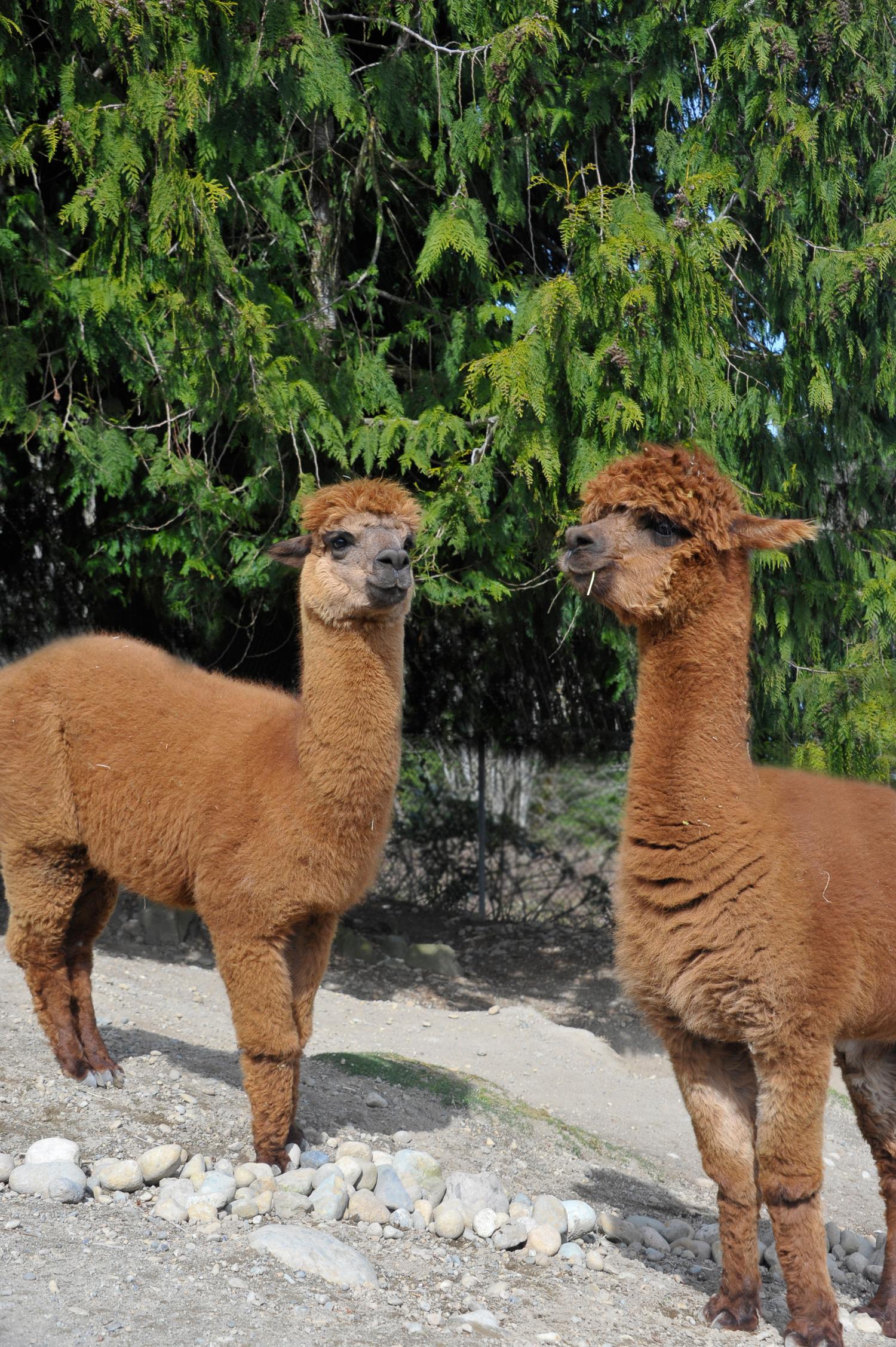
Environment
Range: They originated in Andes of Ecuador, Southern Peru, Western Bolivia, and Northern Chile. Since the rediscovery of them in the 19th century, alpacas can now be found worldwide.
Habitat: Alpacas can be found in Alpine grassland, meadows, and marshes on the heights of the Andes. Their domesticated environments include grasslands, fields, and pastures.
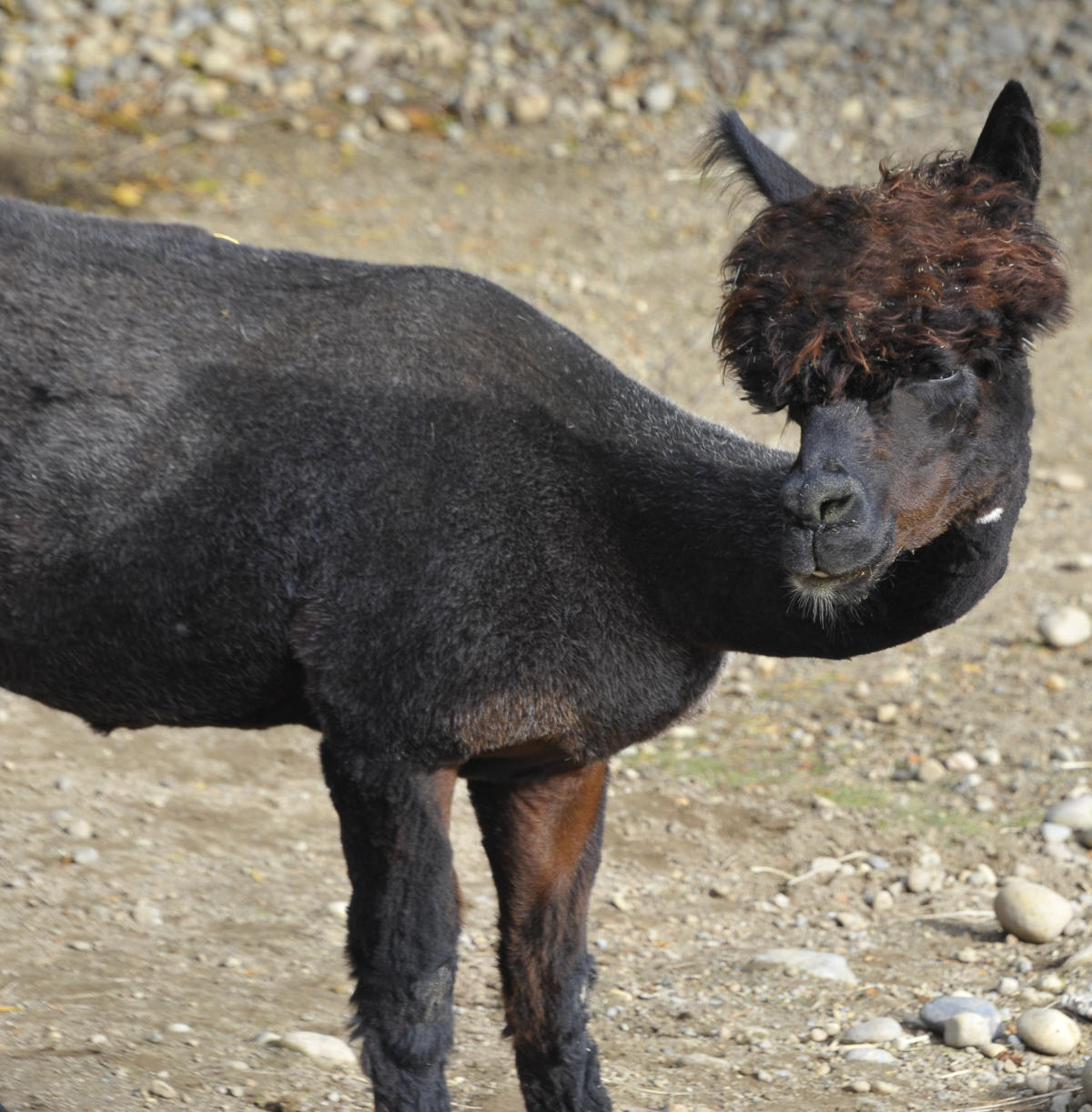
Diet
Alpacas are grazers and feed on a variety of grass species. Pseudo-ruminant/Modified-ruminant.
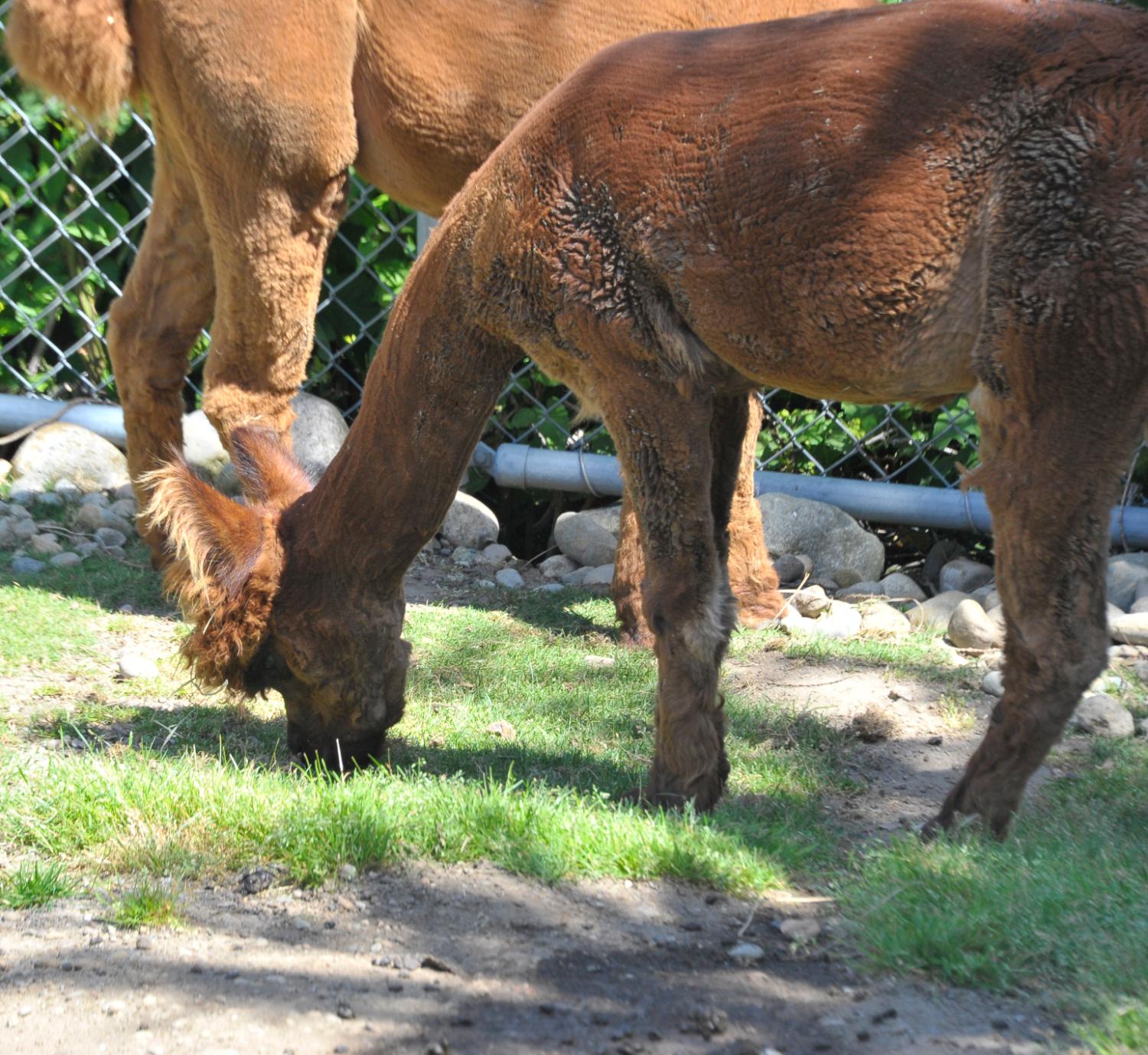
Reproduction
Male alpaca reach sexual maturity around 2.5 years old, females 1.5 years old. Females are induced ovulators, requiring the act of mating to trigger ovulation. They usually give birth to a single offspring in a standing position. Average weight is 15-20 lbs. Twins are rare. The newborn is mobile and following its mother within 15-30 minutes.
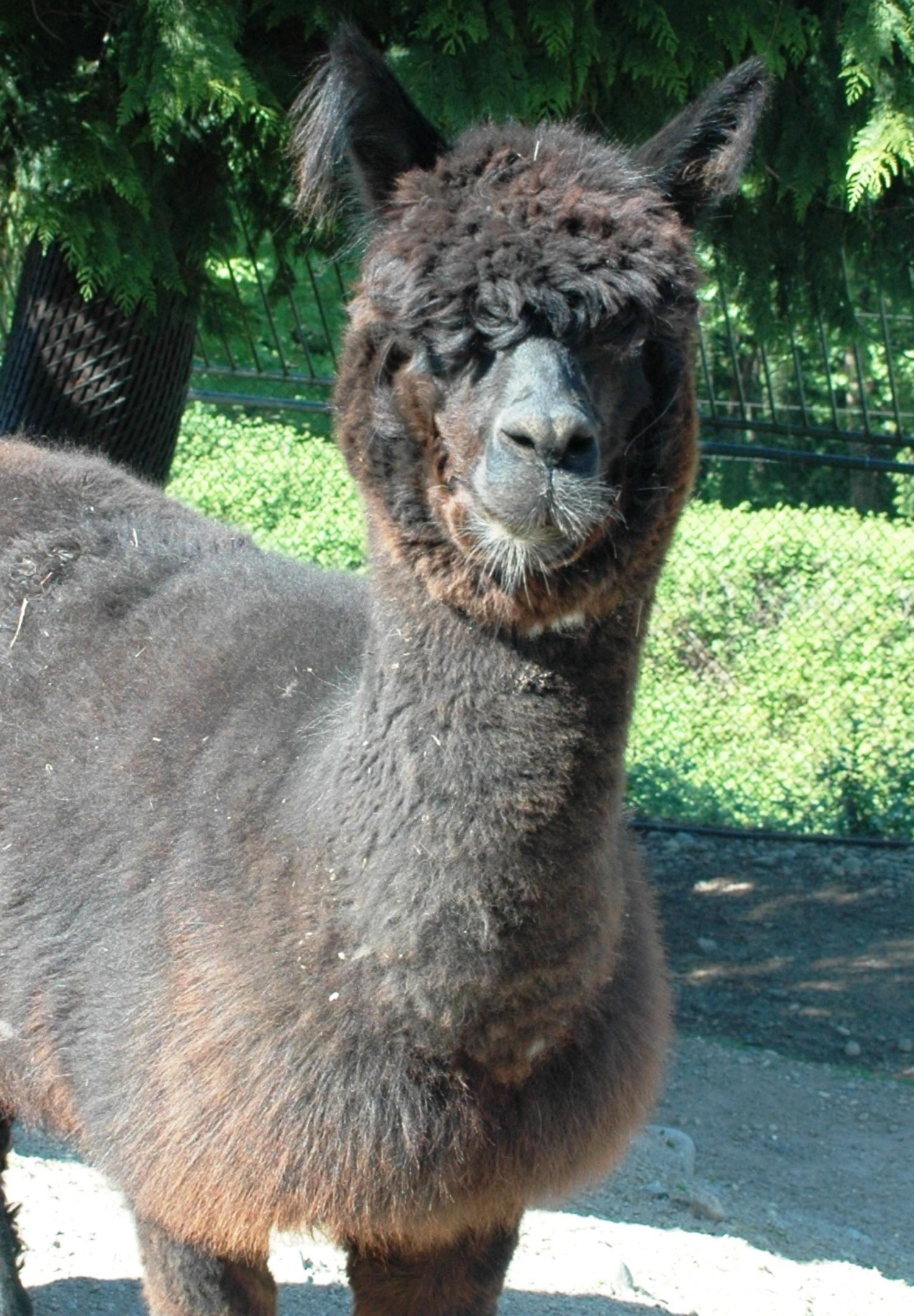
Conservation
Status: Alpacas are considered stable due to being a domesticated animal.
Efforts: None at this time.
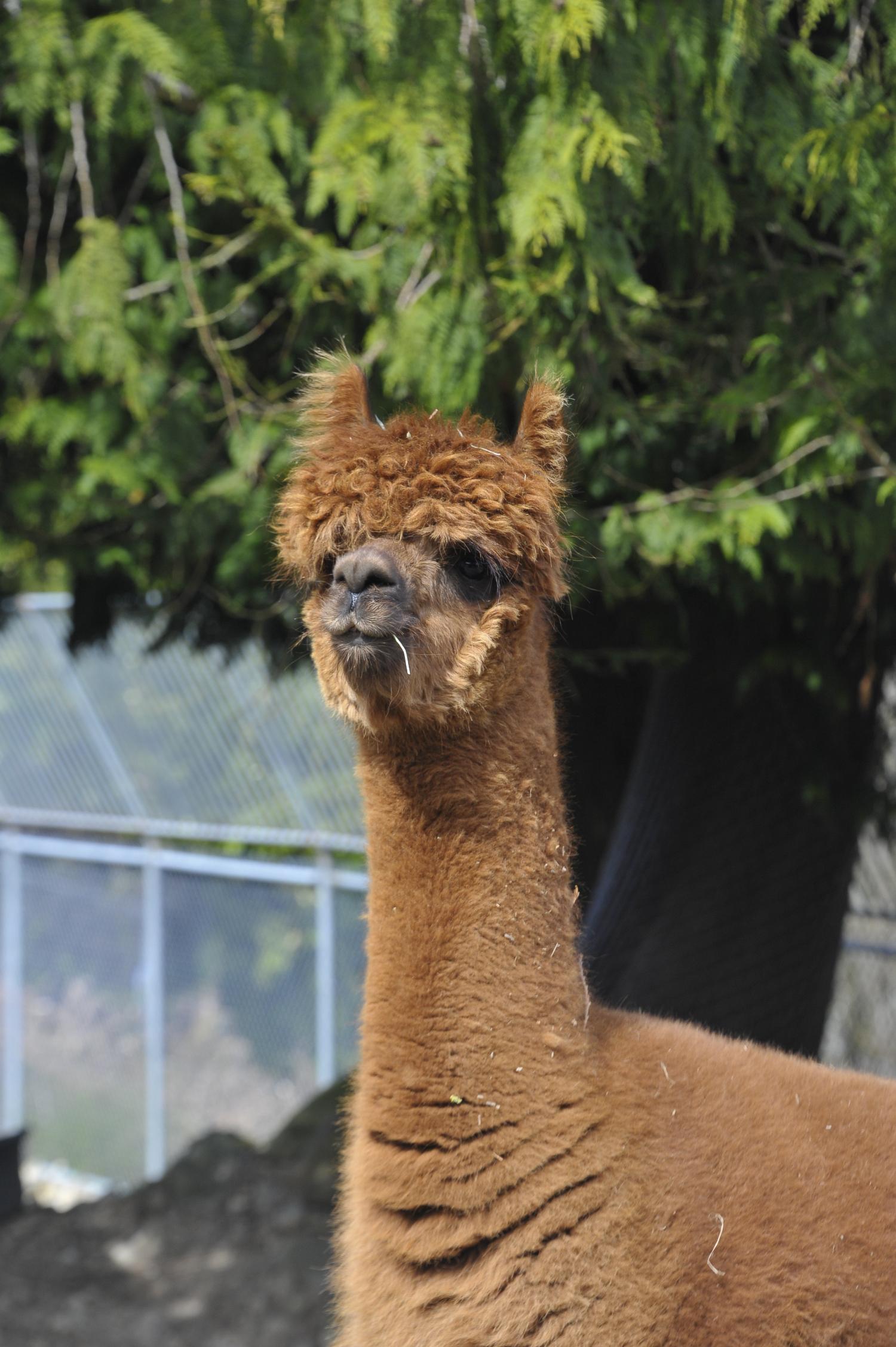
Important Facts
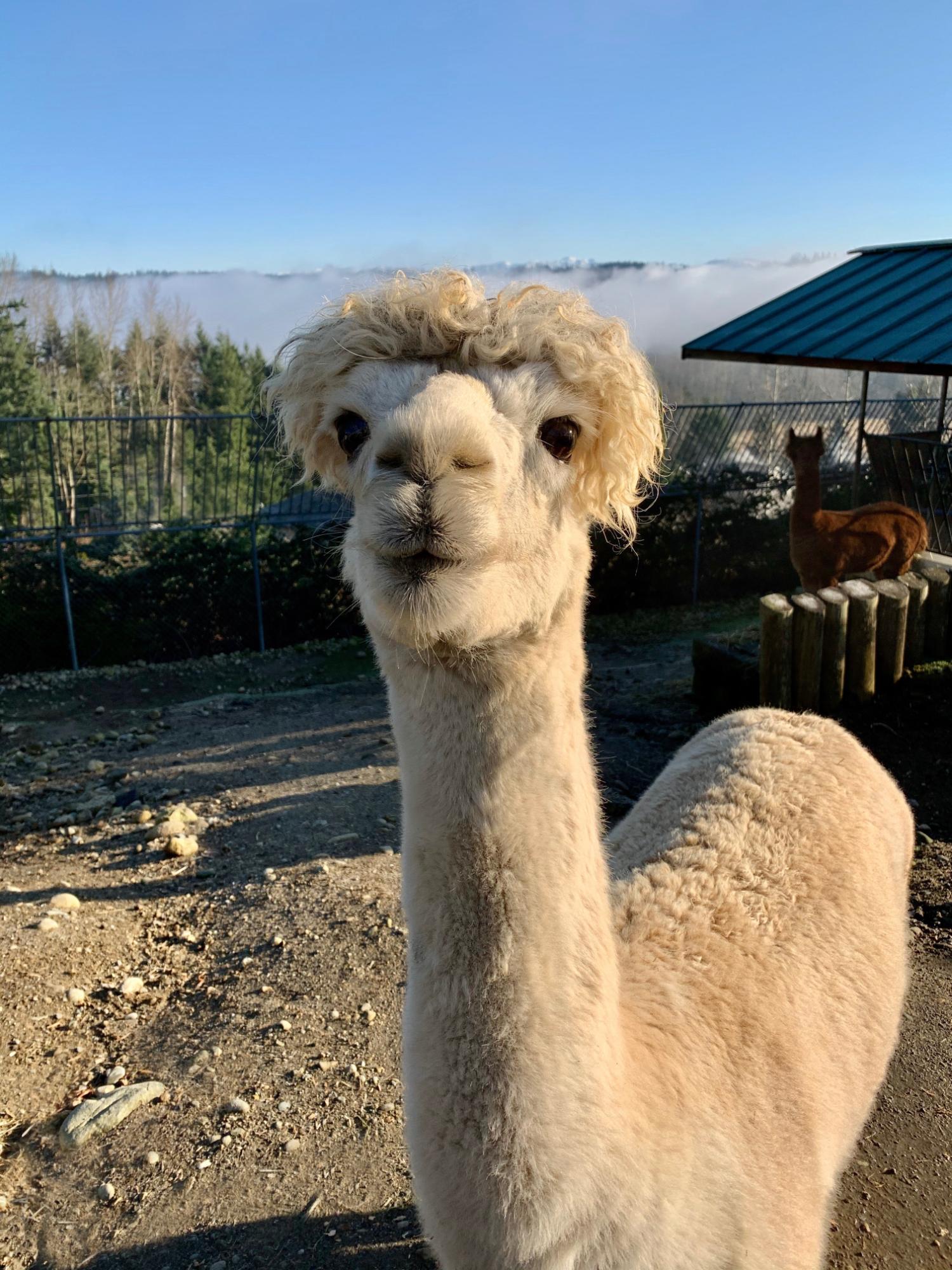
Domesticated over 6,000 years ago, by an Andean civilization.
Their fleece is hypoallergenic.
All camelids spit if they feel threatened or due to competition. Their spit is comprised of their stomach contents and they can spit up to 10 feet.
Sources:
Alpaca Owners Association Inc
Smithsonian Conservation Biology Institute



